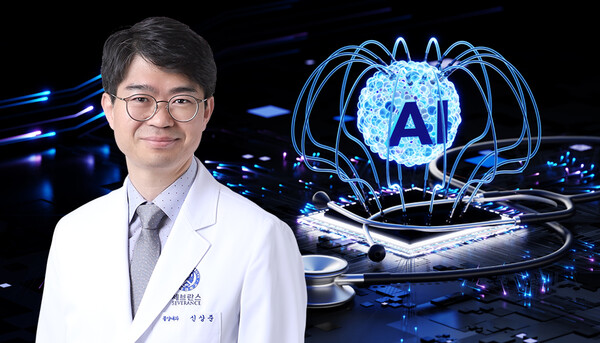Even Korea’s top-tier hospitals—often considered the safest—can pose hidden risks when overwhelmed with patients. Despite streamlined systems designed to enhance care and reduce errors, those very systems can sometimes endanger lives.
This concern drives Professor Shin Sang-joon, an oncologist at Yonsei Cancer Hospital, to focus not only on treating cancer patients but also on building safer, smarter systems for prescribing anticancer drugs.

When Professor Shin joined Severance Hospital in 2006, he faced a major challenge: prescribing chemotherapy. Dosages vary widely depending on patient factors such as weight, and the risk of mistakes was especially high for inexperienced doctors.
Shin recognized the urgent need for a structured, reliable prescription system.
So, he built an anticancer drug prescription system. This experience led to the establishment of a cancer patient database, a clinical research management program, and a data analysis program for drug development.
Professor Shin will share his experiences and achievements at the Hospital Innovation and Patient Experience Conference (HiPex 2025). His presentation will be titled “Why is it necessary to develop healthcare solutions in the era of artificial intelligence (AI)?” HiPex 2025 will be held from June 18 to 20 at Severance Hospital in Seodaemun-gu, Seoul.
In an interview with Korea Biomedical Review, Professor Shin discussed his experience building a prescription system for anticancer drugs. He emphasized that medical solutions using AI can solve various problems at the point of care.
“It's not easy for inexperienced doctors to prescribe similarly named anticancer drugs, such as paclitaxel and docetaxel, and the prescribed dose varies depending on the patient's weight,” he said.
Errors and mistakes also occur during the prescribing process. To solve this problem, they needed a system where all prescription information could be viewed. Shin decided that sharing and communicating information would minimize errors, so he started working on building an anticancer drug prescription system.
He split off non-treatment time to build the system, but it wasn't being utilized at the point of care. The medical staff was not ready to use the new prescription system.
“Since the program was created by me and one or two other developers, there were errors in the beginning, and whenever there was an error, we corrected it one by one with the computer room staff,” Professor Shin said. “After repeating this process, we completed a program that automatically calculates the schedule of anticancer drug administration and the dose of anticancer drugs for each patient.”
However, the new system was not used by doctors who were familiar with the old system. Instead, it was adopted by doctors who were specialists at the time of development.
Entry barriers also lay in the institutionalized healthcare environment.
“Healthcare is a very rigid organization because there are a lot of regulations,” Shin said. “AI technologies, including ChatGPT, are constantly evolving, and AI is being used in various fields, but the medical field is not.”
He noted that “to utilize AI, you need to have direct access to data, and hospitals don't even have the infrastructure to share data (due to various regulations). "
Shin said that, in other words, structured data and an infrastructure to share it are necessary. So, he developed a database of cancer patients and a clinical trial data analysis program to help develop new drugs in Korea.
“We built a database of 200,000 cancer patients at Severance Hospital and created a program that can be used, and we developed a program to analyze and manage data after domestic drug development companies, including venture firms, conduct clinical trials,” he said. “Within these programs, we use AI technology to enhance the program further.”
Professor Shin concluded that accessing AI in the medical field is still difficult, and there are various and complex regulations for each element of healthcare. Therefore, it is necessary to create an environment that can increase the use of AI, including data sharing, while easing regulations for each element.

